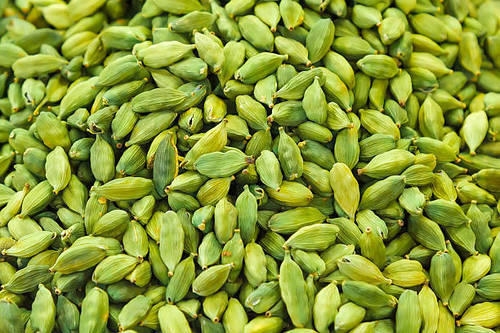General Information
It is referred as “Queen of Spices” and it is mainly called as “Ilaichi” or “Elaichi”. It is a tall perennial plant which belongs to the family of Zingiberaceae. The major cardamom growing states are Kerala, Karnataka, and Tamil Nadu. Because of its property of having good aroma and flavor, it is one of the most expensive spices in the world. The world’s biggest cardamom producing country is India. The dried mature fruit is an edible part and is known as capsule. Cardamom is mainly used for making cakes, bread, flavouring coffee and confectionary and other culinary purposes. It also have health benefits such as it helps to relieve acidity, improves digestion, helps in lowering blood pressure and for preventing blood clots.









